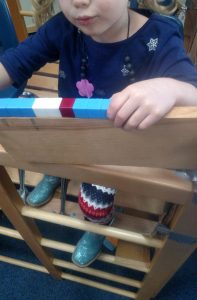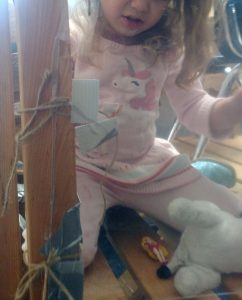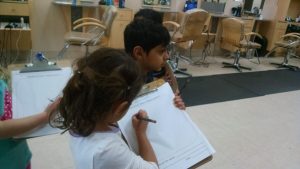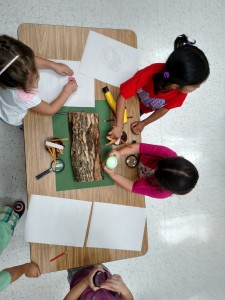
We lost an Ash tree to Emerald Borers.
Calendar Highlights
Friday, October 7 Pick-A-Time opens for conference scheduling
Monday, October 10 NO SCHOOL, Columbus Day,
Thursday, October 20 EARLY RELEASE (2:45), Parent-Teacher Conferences
Friday, October 21 NO SCHOOL, Parent-Teacher Conferences
Tuesday, October 25 Otter & Lemur Class Trip to Volkening Heritage Farm
Friday, October 28 PumpkinFest (6:30pm)
Monday, October 31 Halloween Parade and Party (in-school)
Housekeeping
Please email a picture of your child with your family to me as soon
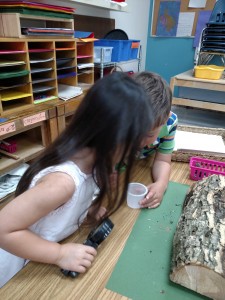
Students investigated the borers’ trails. We found no borers, but we did find some awesome ants.
as you’re able. About half of our families have a picture in, so we’re nearly ready. The project in which we’ll use the pictures helps build logical cognition as well as social growth (the understanding that we are individuals who also belong to multiple groups simultaneously). If you do not want to send a picture, please just let me know, and we’ll do the project a different way. Thanks!
Thanks to all of you who braved the weather to come to the First
Annual Quest Fun Run. Despite the rain, there were smiles all over the place, and a great feeling of community. Here’s hoping to see you all (and the sun!) next year!
News
Last week, I waxed philosophical, so I’ll be more concise and factual this week!
My Special Day
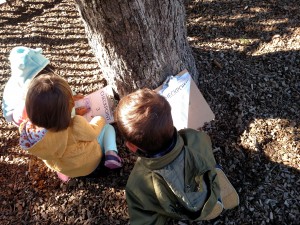
The rally game asks teams of students to travel the playground and “check-in” in a specific order (builds gross motor, collaboration, and ordinal number understanding).
- We had a great birthday celebration, and the honoree taught us about baking birthday cake.
- We learned how to count to say “hello” and “good morning” in Greek (“chairete” and “kalimera”), and enjoyed a quick virtual tour of the Parthenon.
- As promised, we did introduce the words tangential and relevant, in addition to non sequitur, to describe comments and questions voiced in our meetings.
- We are enjoying having a self-appointed relevance monitor, who helps us all stay on track by alerting us to off-topic comments.
Annotated List of Activities
sensory table – new sensory material (water) and a new
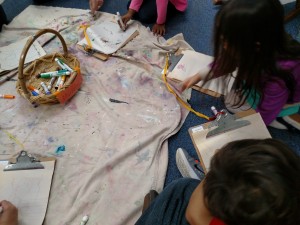
Drawing an ending for “A Letter to Amy,” by Jack Ezra Keats
apparatus. The funnel basket has flexible tubing that takes the water on a mysterious journey. Students were intrigued by figuring out where the water comes out after they pour it into any given funnel. Much of the work at the water table was relationship-building: students learned to negotiate for time with favored tools, to be patient, what kinds of words and tones of voice are effective for solving problems, etc. The second, wide open water table was added to make more room for other tools and other opportunities to problem-solve.
playdough stories – much like directing a play, students used figurines and playdough to construct settings and act out stories from their own imagination. In the process, some students
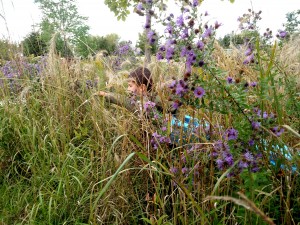
West Campus Explorations
explored the concepts of story elements like beginning, middle, and ending. As we continue through the year, we’ll continue to expand on the elements of stories.
blocks – a new block (see b elow) was added and we posted images of homes around the world around the block area, to inspire students to build new types of structures.
Literacy
We read stories about friendships, including Goggles, and A Letter to Amy, both by Jack Ezra Keats. A Letter to Amy actually took three days to read, as it offers a lot to discover between the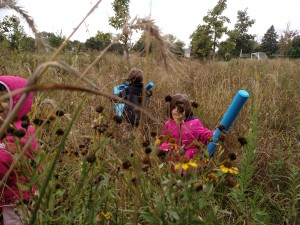 lines — not to mention, the students asked to re-read it! On Friday, we reached the conclusion (again), although the author leaves us an unanswered question: What did peter wish
lines — not to mention, the students asked to re-read it! On Friday, we reached the conclusion (again), although the author leaves us an unanswered question: What did peter wish
for on his birthday? Some students finished their sketches and some put them in t the”unfinished work” tray to complete later.
Story: Sylvester and the Magic Pebble
game: “speedy alphabet”
Math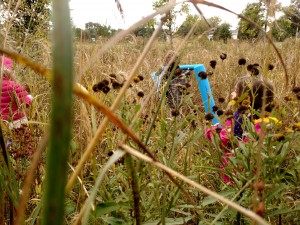
A variety of math-related things have been happening around the room. In the block area, we have been comparing the sizes of our unit blocks. We introduced a new block this week and a number of students worked to discover its name. All of our blocks are named for their lengths, based on the square block, which we call a “1.” This week, we
introduced the “8” blocks.
Students also played the number sense game, “Bears in the Cave.”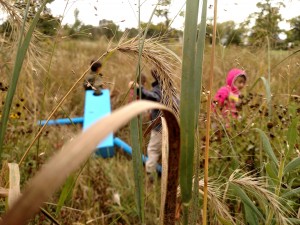
West Campus
Words cannot sufficiently describe our West Campus morning. Check out the video!
Our Community
During the past couple of weeks, your students have tackled a number of rather profound issues:
Toys on the Slide
On the surface, this appears trivial — we could simply say,
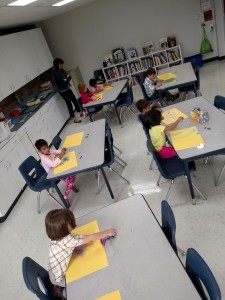
Making like Matisse in the Art Studio
“no toys on the slide.” This would set the safety rules and it might be over.
But we encouraged the students to tackle this issue themselves. I posed the question to the students and then stepped away, ostensibly to get a marker to write down their ideas. While I was “gone,” I recorded their meeting. It was amazing to see the way the students took on this challenge. I imagine that if I had stayed, they would have kept looking to me to either affirm, deny, or guide their steps toward solutions. They conversed on their own, stating different approaches and the pros and cons of each. We didn’t come to consensus but the process was truly amazing, and we have had zero safety issues on the slide.
Partners
A couple of weeks ago, the students made an agreement: “you can’t say no when someone invites you to be their partner.” But after a few days, a
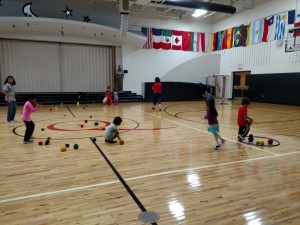
Playing “Fuzzies Go to School”
number of students returned to spurning others in a way that led to some hurt feelings. This week, students discussed it again.
At one point, they seemed stuck. Although I wasn’t sure whether or not I should “butt in,” I offered to use our “random sticks” to randomly make partners. I’m glad I did, because the students resoundingly, unanimously, and respectfully turned down the idea.
Someone instead suggested that a student could select partners, so I asked if it ought to be a new job. They unanimously agreed. I went forward with it, despite many misgivings. After all, if it doesn’t work, they will discover that and try a new solution (which is the whole point!). We have had a “partner selector” job for two days, and it’s going unexpectedly smoothly. I’ll keep in touch.
Update: Full-Size Self-Portraits
These are now complete. Students added details to their portraits, including facial features, clothes, shoes, jewelry, etc., according to their fancy. To highlight their individuality, children drew/wrote responses to prompts like, “I like to…” and “Someday, I hope I will…” — these are now part of their portraits. To highlight their belonging to their families, students added sketches of their families. The portraits are on the the walls of the classroom – come on in and see them!
OK, enough words, I’ll let you take a look at the pictures!
 Hooray! It’s tomorrow!
Hooray! It’s tomorrow! 








